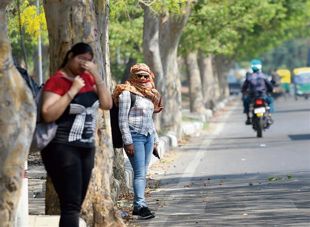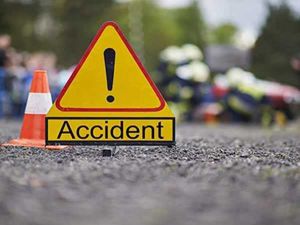
A view of the central part of Astana and the Bayterek tower. The height of the building is 105m with the ball; without the ball, it is 97m, which symbolises 1997, the year of proclamation of the new capital. istock
Sandeep Dikshit
For centuries, the vast and rolling steppes of Kazakhstan have remained wrapped in an enigma. It had several towns on the Silk Route, but none became as well known and heavily visited as neighbouring Uzbekistan’s Samarkand, Bukhara and Khiva. It was but natural that after Imperial Russia conquered Kazakhstan in the 1860s, Moscow and other Slav cities gained prominence. As with the case with Kyrgyzstan, one of the five ‘Stans’ with which its people share ethnic commonalties, Kazakhstan also remained cut off from the international tourist circuit.
5 stars of Central Asia
- Kazakhstan
- Turkmenistan
- Kyrgyzstan
- Tajikistan
- Uzbekistan
Tourism circuit
Turkistan
Located in south Kazakhstan near the western Tien-Shan mountains, it is the latest addition to the country’s must-visit cities Almaty and Astana. It hosts ‘Karavansaray’, the largest multifunctional tourist complex in Central Asia that includes a shopping mall, luxury restaurants, two hotels, and an entertainment centre. One of the holiest places in Turkistan province, the mausoleum of Arystan Bab is a short distance away, as is the resting place of Sufi saint Khoja Ahmed Yasawi. Best season to visit is from April to June and August to October.
Astana
The second coldest capital city in the world after Ulaanbaatar, it has been designed by the well-known Japanese architect Kisho Kurokawa, while British architect Lord Norman Foster designed some of the city’s iconic buildings, including the Palace of Peace and Harmony and the Khan Shatyr Shopping and Entertainment Centre. Must-visit places include Bayterek Tower, inspired by an ancient Turkic myth about a tree of life and a sacred bird. Turkish to German as well as local and Russian cuisine is on offer at trendy restaurants. Best season to visit is from April to June; August to September.
Almaty
Save the jewel for the last. If the stunning scenery does not awe a first-time visitor, its fascinating architecture and delicious food scene would definitely do so. It is also called the ‘Golden Triangle’ because of its proximity to the Charyn Canyon, Kolsai Lakes, and Altyn-Emel National Park. Best season to visit is from March to September.
About Kazakhstan
- Largest country in Central Asia and ninth largest in the world.
- Border with Russia is the second-longest land border in the world.
- Economy larger than all other four ‘Stans’ combined.
- Kazakhs comprise 70 per cent of the population, Russians 15.2 per cent. Rest are Uzbeks, Ukrainians, Germans, Koreans, Turks, etc.

Its isolation deepened during Soviet rule after the Communists decided to locate their rocket launch complex and nuclear testing facilities on either edges of Kazakhstan. Both were closed cities.
The country’s soil underneath holds so many riches that to paraphrase a Baloch proverb, ‘A Kazakh child may be born without socks on his feet, but when he grows up, every step he takes is on gold’. Besides this coveted metal, Kazakhstan is the world’s biggest producer of uranium, some of which powers India’s nuclear power plants. It is now turning to the mining of rare metals such as lithium and graphite that are so essential as the world turns to green energy.
![10305547cd _img_20240503_wa0049[1].jpg](https://englishtribuneimages.blob.core.windows.net/gallary-content/2024/5/2024_5$largeimg_376768890.jpg)
But Kazakhstan has been undergoing a silent change ever since it detached itself from the Soviet Union in 1991. At Almaty airport late last month, it was surprising to see a group of excited Hindi heartland youngsters hurrying towards a waiting flight for Delhi. They were company representatives being rewarded for meeting their sales targets. For decades, Indian companies would reward high achievers with junkets to shopping paradises of Bangkok or Dubai. But now, a country speaking a strange language with very little to offer is not as unwelcoming to tourists and entrepreneurs alike.
Powered by sales of precious metals and crude, Kazakhstan has effected a makeover. Over 10 years ago, when then Prime Minister Manmohan Singh arrived to ink a deal for an oil block in the Caspian Sea, the sustainability of the newly created capital of Astana in the middle of the steppes seemed doubtful. From a couple of cars serenely cruising along, today, there is actually a rush hour on the roads. Pubs hum with customers and upscale malls buzz with the laughter of children. The number of skyscrapers in this gleaming capital, created in 1997, has quadrupled. Its proximity to China results in goods coveted by Indians competitively priced with those in Dubai or Hong Kong. Advertisements on TV offer vacations to Hawaii, while BMWs and the Chinese ‘Tank 500’ dominate airtime.
Extrication from Russian domination was not easy. Probably the first large protests in the Soviet Union took place in 1986 and may have caused the first fissures in the empire, leading to its eventual dismantling. The Jeltoqsan (December uprising) began in Alma-Ata after then Soviet Communist Party General Secretary Mikhail Gorbachev dismissed Dinmukhamed Kunaev, an ethnic Kazakh and the Communist Party boss of Kazakhstan. The people did not take kindly to his replacement with an ethnic Russian who had never lived in Kazakhstan. Protests spread to other large cities of Shymkent and Karaganda. As Soviet forces bore down on the protesters, only one leader stood up to resolve the situation — Nursultan Nazarbayev, a former metal worker. Three years later, he was the Communist boss of Kazakhstan and, on Independence, its first President for the next 28 years.
Now retired, he gave up complete power to his successor Kassym-Jomart Tokayev in 2022 when he resigned as Chairman of the Security Council. Kazakhstan’s current makeover can be traced around those months. In January of the same year, several cities were rocked by violence that preceded peaceful protests over high energy prices. The government acknowledged 225 deaths, including 19 security personnel.
The authorities said bandits and international terrorists had hijacked the protests. Dilara Isa, a journalist who livestreamed the protests, “noticed that the protesters who smashed windows and damaged cars were different from the peaceful protesters who’d put forward demands, sang the national anthem, and advised others in the crowd not to destroy property”, wrote The Diplomat.
There is an active desire to craft a multi-ethnic Kazakh identity, where the dominant religion Islam is positioned differently from the several streams that are prevalent in the neighbouring regions of Turkey, North Caucasus, the Persian Gulf, and South Asia.
“While some groups were benign, there were also Salafi-Jihadi groups seeking to establish themselves in the country. Yet, unlike its neighbours, Kazakhstan did not experience a serious challenge from religious extremism at Independence. But, since 2005, extremist violence has been on the rise. Kazakhstan’s extremism problem is connected to influences from the North Caucasus, the Afghanistan-Pakistan area, and the Syria-Iraq war zone,” noted the Stockholm-based Institute for Security and Development Policy.
“In international comparison, Kazakhstan’s believers stand out by opposing political manifestations of religion. There is exceptionally low support for Sharia law and half of Kazakhs believe different religions lead to heaven, and that a person can be moral without believing in God. These numbers are off the charts in comparison with the rest of the Muslim world and are indicative of a society deeply steeped in coexistence between religious communities,” it added.
The strain of Islam Kazakhstan wants to be steeped in is Sufism. It is exemplified by the careful curating of Khoja Ahmad Yasawi’s imposing mausoleum in Turkistan city, which is growing rapidly from a sleepy spiritual capital of the Turkic world to a modern centre of tourism and pilgrimage.
The “astoundingly beautiful” — as The Lonely Planet puts it — glorious blue, turquoise and white tiling on the outside of Yasawi’s tomb or ‘Little Mecca’ is replicated in the reconstructed mausoleum of Rabiya Sultan Begim, the great-granddaughter of the Timurid dynasty’s founder Timur and whose successors ruled parts of the region till 1920, when the Soviets rolled in. The right-hand corridor in the Begim’s mausoleum contains the tomb of Abylay Khan, leader of Kazakh resistance to the Zhungars (Mongols) in the 18th century. The messaging is unambiguous.
Homegrown Sufism and local dynasts have been in charge in the medieval era.
Museums, with multi-lingual displays, delve deeper into Kazakhstan’s existence and portray unique stands on the emergence of the country. There is no hint of rancour with any of the dramatis personae of the past. Despite the rough brushes with the Russians and the dogged promotion of Kazakh language, Tokayev in a speech pointed out that the Russian language is “certainly necessary for all of us”, given the world’s second longest border it shares with Russia and the demand for this language in the Eurasian space.
“The characteristic features of the citizens of Kazakhstan are national tolerance, respect for traditions of the past and different cultures, knowledge of the state and other languages. Each holder of the turquoise passport enjoys all the privileges of a citizen of Kazakhstan, regardless of ethnicity, views and beliefs,” he emphasised.
With a similarity in ethos, Kazakhstan and its former capital Almaty have never been far from Indian minds. Till a decade back, old-timers used to recall Indira Gandhi’s 1955 visit to this quaint Silk Road town, delicately dissected by clear mountain streams and ringed by the snow-flecked northern Tien-Shan mountains. An Indian postal stamp features Abai, Kazakhstan’s revered poet, philosopher and composer. His bust is installed in New Delhi, next to Abai Kunanbaev Street (Abai Marg).
Kazakh troops participate as part of the Indian UN Peacekeeping battalion in Lebanon with the seventh such rotation currently going on. Previous Kazakh President Nursultan Nazarbayev made five visits to India, including once as the Chief Guest on Republic Day. In fact, after Kazakhstan became Independent, the first overseas visit by Nazarbayev was to India. Indian universities like Sharda, Amity and Sambhram and medical centres like Medanta have established themselves in Central Asia.
India’s ties with Kazakhstan have been accelerating in the past two years. Following China’s example, Prime Minister Narendra Modi held India’s first-ever virtual summit with all five Presidents of Central Asian countries in January 2022. The occasion would have been grander as the five were to attend the Republic Day celebrations a day earlier, but rising Covid cases led them to call off their visits.
The 5 +1 format, as the interaction with the five Central Asian countries is called, has become popular with all major nations, including the US. National Security Adviser Ajit Doval has had multiple interactions in the last two years with leaders of Central Asian counterparts, both in the collective format as well as during meetings of the Shanghai Cooperation Organisation.
At the last such meeting in Kazakhstan, Doval said all five Central Asian countries will become a member of the India-Iran-Russia (International North-South Transport Corridor — INSTC) corridor. Doval also flagged another area for future cooperation — rare earths cooperation and strategic mineral collaboration. India will also organise a seminar between leading scholars and ulemas from India and Central Asian countries to facilitate a deeper understanding of the history and context of Islam.
As prospects of businesses open with greater connectivity, Kazakhstan’s carefully preserved past, modern infrastructure and the solid pedagogic foundation is already leading to a rising outgo of tourists, students and entrepreneurs.
Join Whatsapp Channel of The Tribune for latest updates.



























